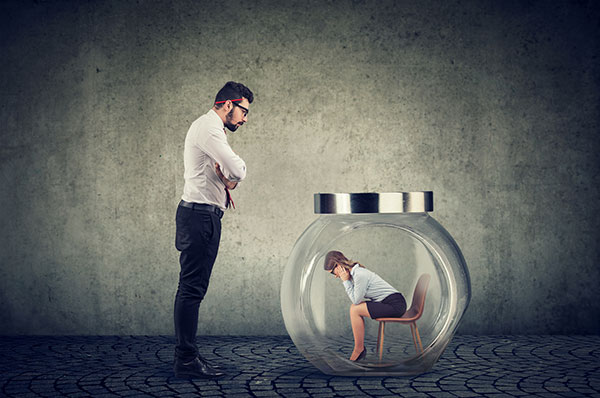Create an environment
free from bullying
and harassment


Blogs
The link between narcissism and bullying
Although the association between narcissism and bullying has not been fully investigated yet, it has been found that narcissistic individuals often resort to bullying behavior.
A few years ago, I suffered extreme workplace bullying at the hands of my HR manager. At the time, I couldn’t understand my perpetrator’s motivations. His behavior made no sense to me.
It was only later that I came to understand that it was all about his own insecurities and had little to do with me. Mostly, he was threatened by my successes in the workplace, which undermined his power position.
What’s interesting is that much later, while learning about Narcissistic Personality Disorder, I discovered he showed all the personality traits associated with the diagnostic criteria:
- A pattern of grandiosity and self-importance.
- An acute need to be admired.
- An absence of empathy.
- The dismissing and devaluing of others’ achievements.
- Boastful pretension
- Angry reactions to criticism.
- Inflating of accomplishments.
- A desperate need for attention.
- Fragile self-esteem.
Amazingly, my bully ticked every box and may have added some of his own. What stood out for me most was the ‘absence of empathy’.
He wasn’t so much unaware of the incredible hurt he was causing—he just didn’t care. There was zero emotional intelligence.
He may have even deluded himself into believing that his my-way-or-the-highway approach was ‘strong leadership’. In fact, his behavior created a toxic environment, reduced productivity and sent employee morale and emotional health plummeting.
He was living proof that a single intimidating presence can poison the climate of an entire workforce, especially when supervisors fail to take immediate and appropriate action to stamp out unacceptable behaviours.
The Vital Role Of Upstanders In Bullying Prevention
We think of most bullying situations as a two-person interaction between the perpetrator and the chosen target. But there’s typically a third component involved–the witness or bystander, whether present when the bullying occurs or learns about it later.
It is the actions or lack thereof of these bystanders that are often the most important factor in whether bullying is stopped in its tracks or allowed to continue unchecked.
What is an upstander? An upstander is a helpful bystander. They are someone who sees something wrong and takes positive action to make it right. Someone who will do all they can to protect and support anyone who is being treated unfairly or intentionally hurt.
Bullying rarely happens in complete isolation. One Canadian study, for example, found that over 80% of bullying incidents in schools happen in front of witnesses.
The situation in workplaces is similar—someone usually knows what’s going on. But the question is, what are doing about it?
Being an upstander means doing something to help, e.g., supporting the victim, reporting the incident, discouraging others from contributing to the problem, etc.
Without strong upstanders, a bullying target can feel terribly isolated. Bullying affects everyone, so always ask yourself, “What can I do to help?”
Becoming a helpful Bystander
Bystanders come in two categories–harmful bystander and helpful bystanders.
How to be a helpful BYSTANDER in bullying situations:
- Make it clear to your co-workers that you won’t participate in bullying behaviours.
- Never stand by, watch and do nothing. Ask yourself, “what if it was me?”
- Never encourage bullying behaviour—this makes you a co-bully
- Report bullying incidents to management ASAP. Waiting doesn’t help anyone but the bully.
- If the bullying is so serious that you feel the victim’s life or personal safety is in danger, report it to the police.
- Never respond to messages, emails or photos that might be upsetting or offensive. This includes ‘liking’ or sharing a social media post that denigrates a co-worker.
- Don’t spread office gossip. For some, this is like suggesting ‘don’t breathe’ because the habit is so second-nature. But spreading rumours, half-truths and ‘juicy drama’ around an office is a type of bullying no less harmful than standing over someone’s desk and yelling in their face.
- Do everything you can to support a bullying target in asking for help or reporting the incident(s).
- When assisting a victim in reporting a bullying incident, remember that well-documented facts trump emotion and opinion every time.
Which type of bystander will you be?
Bullyology® is passionate about raising awareness on the effects of bullying and helping people break the silence. If you would like to book us for a training course or speaking event, please get in touch.
Please share with like-minded colleagues who can benefit from our insights and get social with us.

